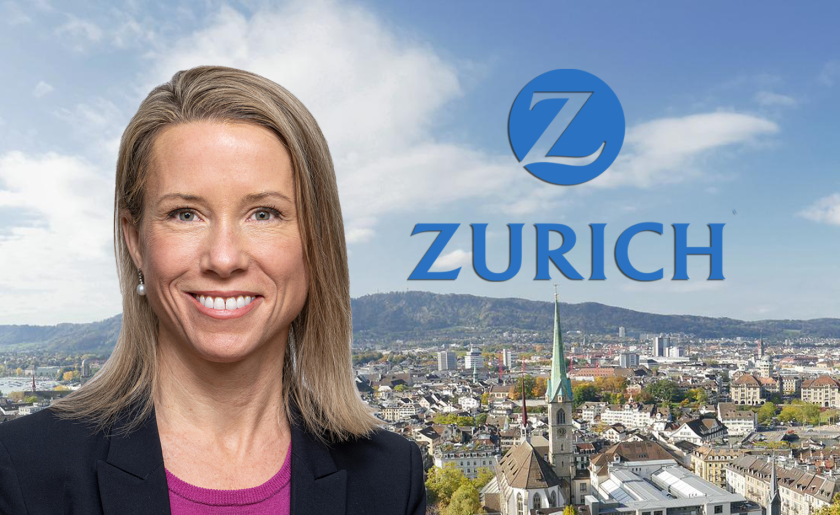But as rate increases continue in some areas, insurers must focus on communications with cedants to manage their concerns over pricing.
In a wide-ranging interview with Insurance Insider, the commercial insurance CEO also commented on:
Managing cat risk in an age of increased severity and frequency of severe weather events
Maintaining relationships with clients in a context where carriers must press for more rate
The progress of Zurich’s middle market push, with this segment now up to a quarter of the book
The executive was speaking after the commercial lines business she leads posted another strong half-year with 12% growth, a 90.1% combined ratio, and a modest reacceleration of rates.
Building resilience for the soft market
With rates in strongly positive territory since 2019, how much more the Long Firming can go on is a key question for the industry, even as a micro cycle in US cat-exposed property helped overall rate indices re-accelerate through H1.
Asked about the way in which Zurich prepares itself to prosper in a soft market environment, Signorelli pointed to continued rate momentum in most areas.
But she said that in a softer environment a mindset shift is required with underwriters having to carefully balance the need to maintain relationships with clients, and the need for underwriting discipline.
“Things might [have been] a bit more absolute [in the hard market], and as the market transitions everything becomes a bit more nuanced,” she said.
“It's important to have data and insights to help support underwriters, not to make the decisions for them but to help them make those trade-offs: where can you afford to [give up some rate] and where do you not want to do that?
“That's not just by line of business – it's going to be by geography and industry and pricing history and all these things.”
Zurich’s large and diverse portfolio is an advantage in a market where different lines of business are at different stages of the cycle, Signorelli said.
“Right now, financial lines and cyber are challenging from a rate environment perspective but we have other lines of business that continue to have favourable rate environments,” she said.
“Being able to balance the overall portfolio so that we make sensible decisions overall is most important.”
In addition, the Zurich executive said while the commercial lines business is always focused on expense discipline, “in a soft market this becomes even more of a focus”.
Use of reinsurance would also be re-evaluated in a soft market, she added.
Multiple consecutive years of rate increases have caused frustration among clients, Signorelli acknowledged, and while there is little insurers can do to eradicate that, they can soften the blow.
“One of the things that we’ve put in place is that we have to give six months’ notice to any customer where we're going to make a change [to their policy],” she said.
“While we’ve always said that, [it’s about] making sure that we're absolute about it and saying that's our approach. Nobody likes bad news but having bad news late – that's when people can't necessarily forgive and forget.”
Insurers must also communicate clearly to clients why their products are becoming more expensive, Signorelli said.
“Rates aren't increasing because we think that we should just charge more money,” she said. “It's the underlying challenges that we're seeing.”
She added that Zurich improved its discipline and analysis of its own portfolios when it began remedial action in 2017.
“We've gotten better at using that information to have conversations with brokers and customers to be able to articulate ‘why are your premiums changing? Why do we have less appetite for it from a capacity perspective or retention perspective?’ And then having a conversation about what can they do about it so that they can make the trade-offs.”

Managing cat risk
A key trend emerging from the Q1 and Q2 earnings so far this year has been the shifting of a proportion of the cat loss burden away from reinsurers and back to cedants, as a result of reinsurers increasing retentions on treaty contracts.
While pointing out that the losses have skewed towards personal lines writers, Signorelli acknowledged the challenge and said Zurich’s commercial lines business is taking action to reduce its own cat burden.
“We've spent the last several years really focused on our accumulation exposure and taking steps to manage it,” she said.
“We've also been focused on deploying our cat capacity to those customers that are really taking steps to manage their exposure. We want to reward those customers that are investing in resilience. That helps us overall to manage the risk.”
Zurich’s plans: Taking on the middle-market
Signorelli provided an update on Zurich’s target to write more middle-market business, as outlined in an interview last year, broadening out from its large account heartland.
The middle-market space requires greater efficiency and better use of technology, as well as “the right people and the right propositions that meet needs”, she said.
Middle-market business is now around a quarter of Zurich’s overall commercial lines portfolio, with profitability “reasonably in line with our portfolio overall”, she said. Zurich wrote $31bn of commercial lines premiums last year.
Signorelli went on to explain that Zurich is maintaining its focus on customers and their challenges in a bid to “remain relevant” and come up with “compelling propositions” for them.
“Part of that is maintaining good hygiene,” she added.
“[It] can be annoying that we don't always do [some things] consistently well as an industry. We want to make sure that we issue policies correctly, that we handle claims transparently and that we measure all these things and hold ourselves to account.”
Another main priority for the business is continuing profitability, Signorelli said.
“We want to focus on maintaining discipline and transparency in our portfolio and our result,” she said.
“This is so that we are a balanced and reliable partner, because if we have the dramatic ups and downs of the market cycle then it doesn't make us look very credible as an industry, but it also doesn't make us a good partner to our customers and our brokers.”



